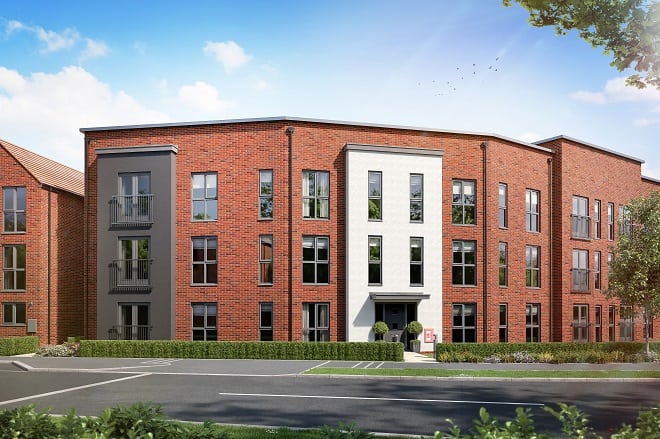
Plans to buy 42 homes to be let at ‘genuinely affordable rents’ to those on Thanet council’s housing waiting list are expected to be approved by the authority this week.
The properties are part of the Spitfire Green development off the New Haine Road in Ramsgate and will be bought by Thanet council at a cost of £5million as part of a subsidised deal with housebuilder Barratt Homes.
The properties will be the first of 400 affordable homes that Thanet council has pledged to deliver over the next four years.
The programme will be funded with 60% coming from the council’s Housing Revenue Account and 40% subsidised via developer agreements, Homes England grants or income from Right to Buy sales – of which there were around 15 last year and three expected this year.
Data by Thanet council shows the rent income will show a surplus after year 18. Costs up to that point have been built into the budget through savings from rental income across the authority’s housing portfolio.
Deputy council leader Helen Whitehead, who leads on housing issues, said Thanet’s housing situation has “extraordinary challenges” with 1604 households on the waiting list but many more who are also struggling with affordability and suitability of their homes.
She added: “Rental rates across Thanet are increasing rapidly as are evictions notices Properties that five years ago costs around £600 per month are now routinely marketed for over £1,200.
“Regeneration without infrastructure such as genuinely affordable housing is simply displacement. This should not, and will not, be the future of our community.”
The Spitfire Green properties are made up of 33 x 1 bed flats; four x 2 bed houses; one x 2 bed flat and four x 3 bed flats.
Housing director Bob Porter said: “Single people are the largest single group on the housing register and more than half of the households in temporary accommodation are single people so there is a clear need for one bedroom flats.”
He added that a mix of homes could be created across the four year programme.
Cllr Whitehead said the properties will be either at or just below the Local Housing Allowance rates, adding: “These are in every sense genuinely affordable.”
Currently the LHA rates for Thanet are per month:
Shared accommodation £299.17
1 bedroom £473.72
2 bedrooms £648.22
3 bedrooms £797.81
4 bedrooms £947.40
Cabinet members will discuss the purchase at a meeting on Thursday (July 27).
At the same meeting proposals are expected to be agreed to buy nine homes at Westwood using £1.19million of funding from a national £500 million scheme to enable local authorities to purchase properties for Ukrainian and Afghan refugee households for an initial period of 3 years. Thanet council will match-fund the grant with £1.996million from its housing capital programme.
Spitfire Green homes discount
Barratt Homes has also launched a selection of Discount Market Sale apartments ready to reserve off-plan at Spitfire Green.
The scheme is available at a discounted value of 20% for those who live or work in Thanet, were previously a resident in Thanet and have a close family member who resides in the district, or those who need to live in Thanet to support a family member. Eligible buyers must earn no more than £80,000 per year.
To find out more about Barratt Homes Kent, call 0333 355 8502 or visit www.barratthomes.co.uk

